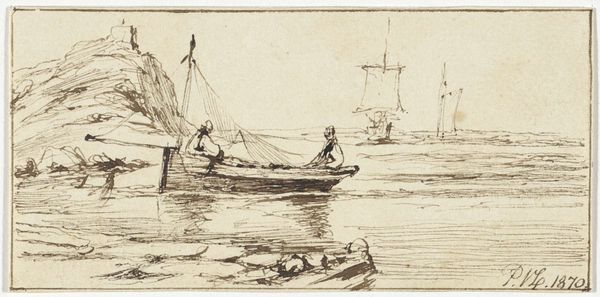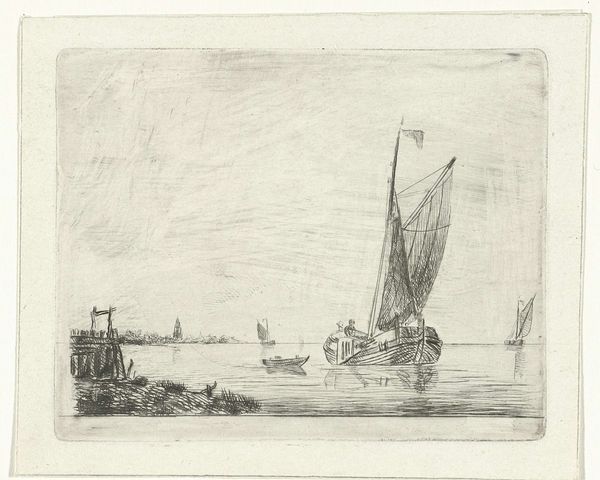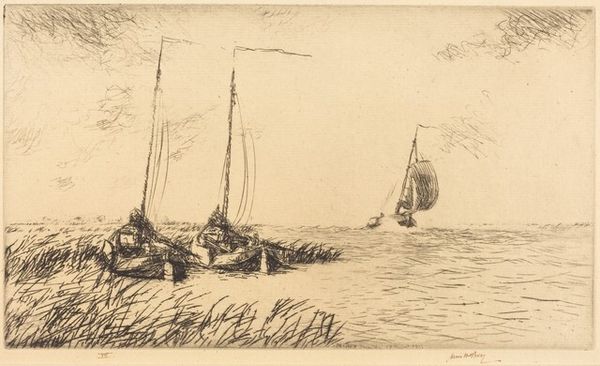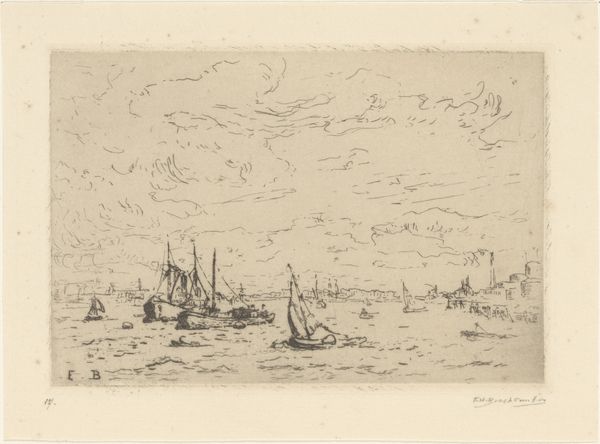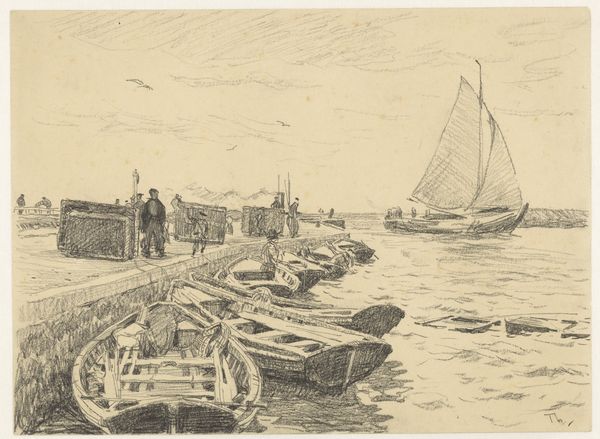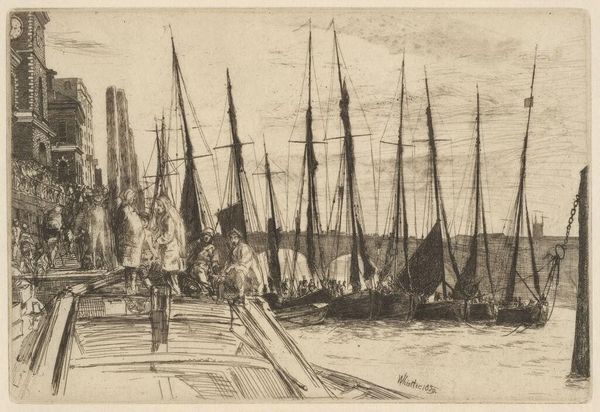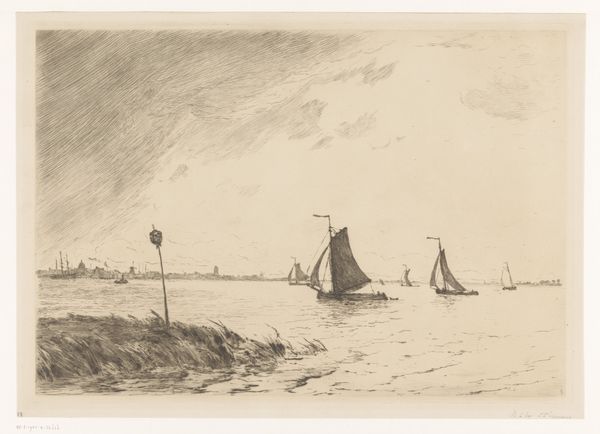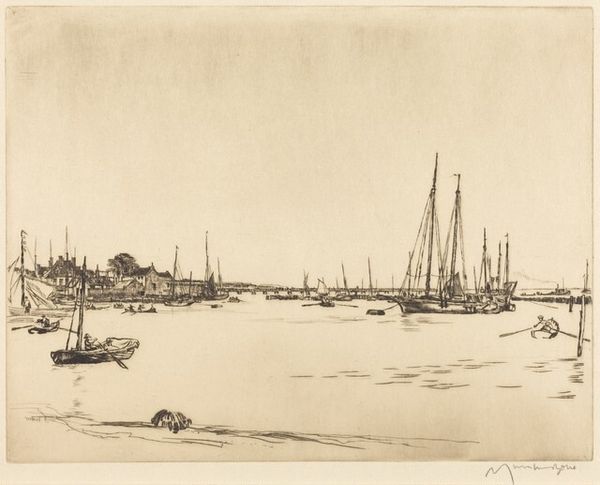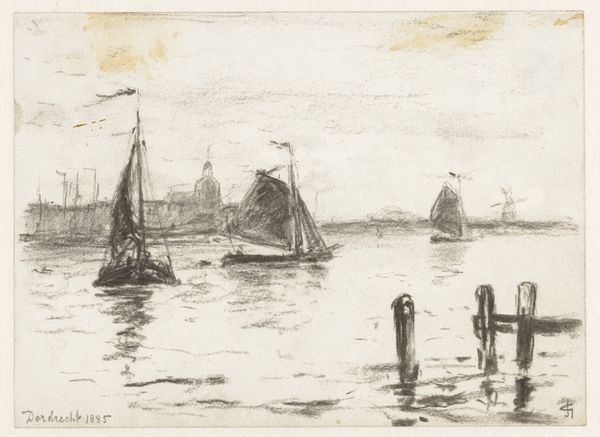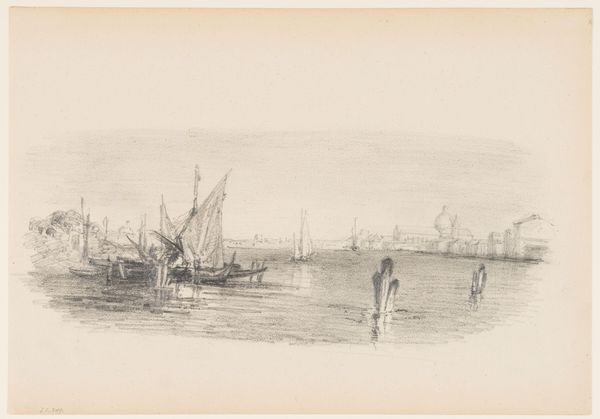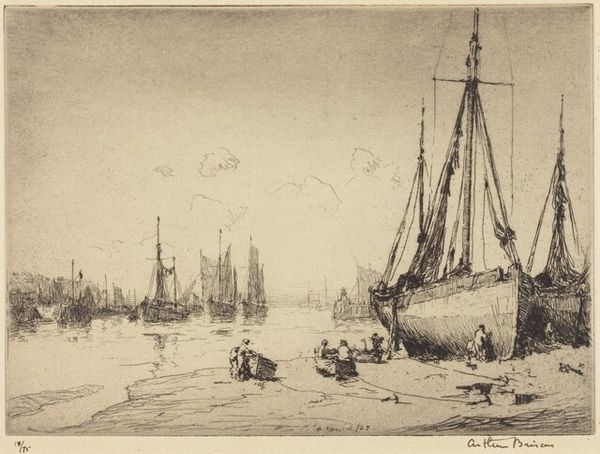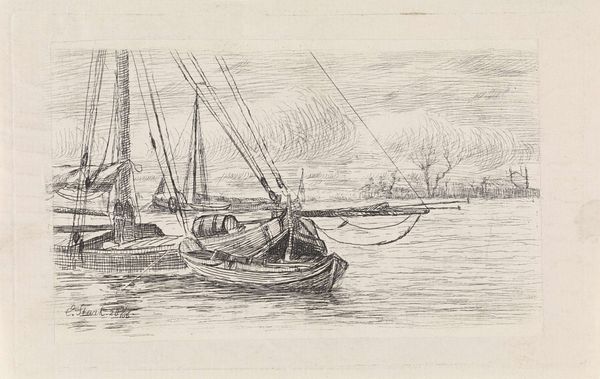
print, etching
#
dutch-golden-age
# print
#
etching
#
landscape
#
realism
Dimensions: width 218 mm, height 153 mm
Copyright: Rijks Museum: Open Domain
Curator: This is Johan Conrad Greive’s etching, “Gezicht op het Zuiderzee nabij Spakenburg,” dating roughly between 1847 and 1877. It now resides here at the Rijksmuseum. Editor: There's such a melancholy beauty to the greyscale tones; it's like peering into a memory, something almost forgotten but still lingering in the collective consciousness. The stillness in the water only adds to that, amplifying a profound sense of reflection. Curator: The image is deeply rooted in the Dutch Golden Age tradition, representing a specific place: the Zuiderzee near Spakenburg, which in the past, was the cultural and economical cornerstone of The Netherlands. Note how even the sailboats on the water have stories woven into their image. They act as a visual representation of connection and commerce, reminding viewers of the trade routes and exchanges. Editor: You're right, the sailboats almost act as leading lines, but the formal composition creates this incredible feeling of expansiveness using just monochrome shades. Notice, the horizon line almost bisects the print and draws the eye into the quiet sky. Curator: Skies in Dutch art of this period held particular importance, often being metaphors for fate and destiny. Clouds gathered symbolic value as well, often signifying impending doom or a change of fortune. But the presence of ordinary figures engaging with the boat suggests a hopeful narrative focused on resilience, tradition, and enduring community. The etching speaks of something permanent even as tides of change erode its shores. Editor: Yes, the symbolism lends a weighted quality to such humble material - but, looking at the formal characteristics of the print-making, the use of hatching to describe the water and texture on the boat and sand is extraordinary. I’m almost convinced I can feel the gritty dampness of that shoreline. The way he balances detail with atmospheric perspective—it's remarkably done. Curator: Indeed, there's a poignant interplay here, where the immediate tangible world meets a larger more intangible story of history, cultural memory, and maybe, the quiet hope for a horizon of one's own. Editor: Well, now I won’t be able to forget that the next time I stare out at the ocean, feeling contemplative or pensive. Thank you for your wonderful insight.
Comments
No comments
Be the first to comment and join the conversation on the ultimate creative platform.
